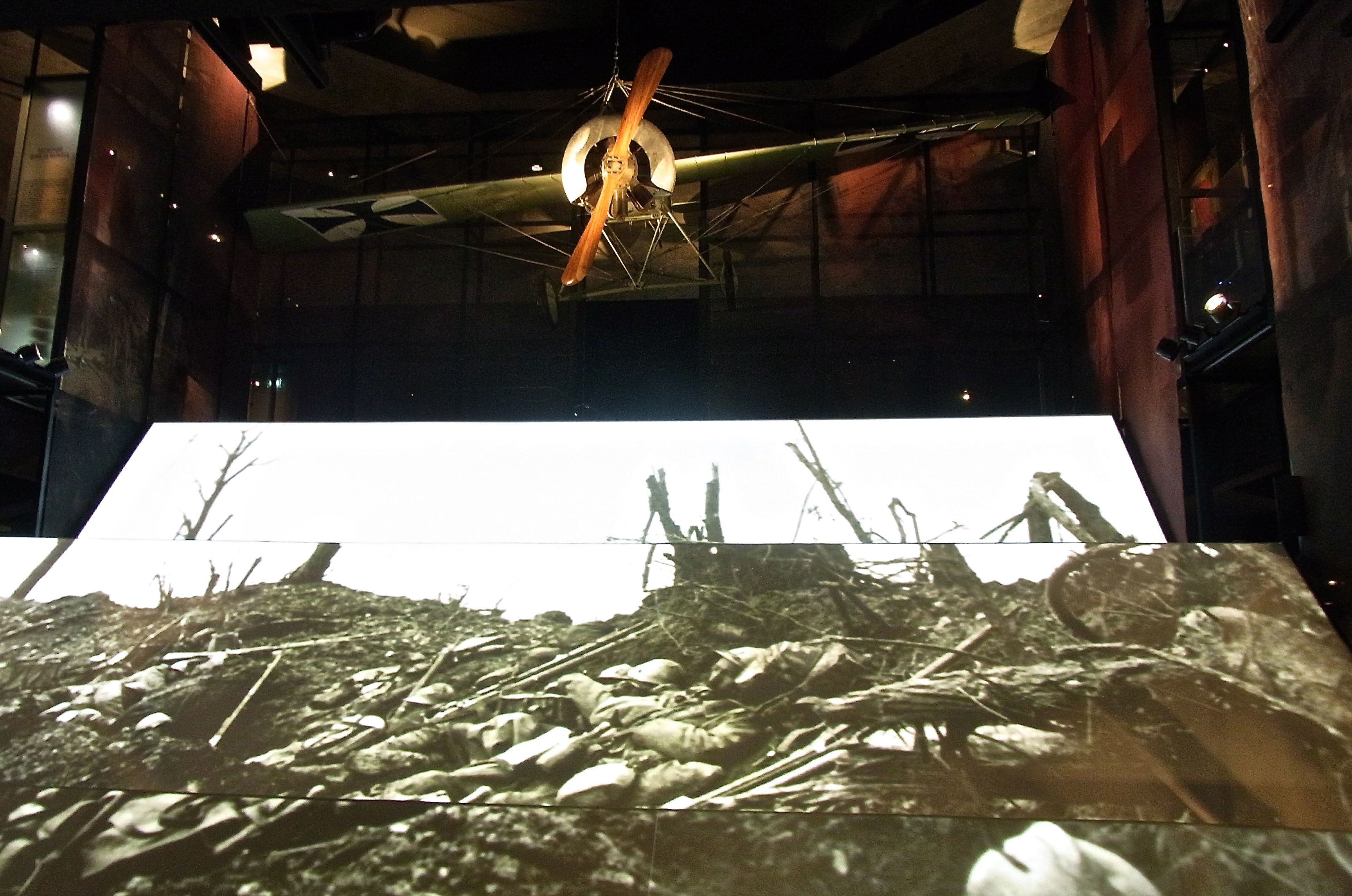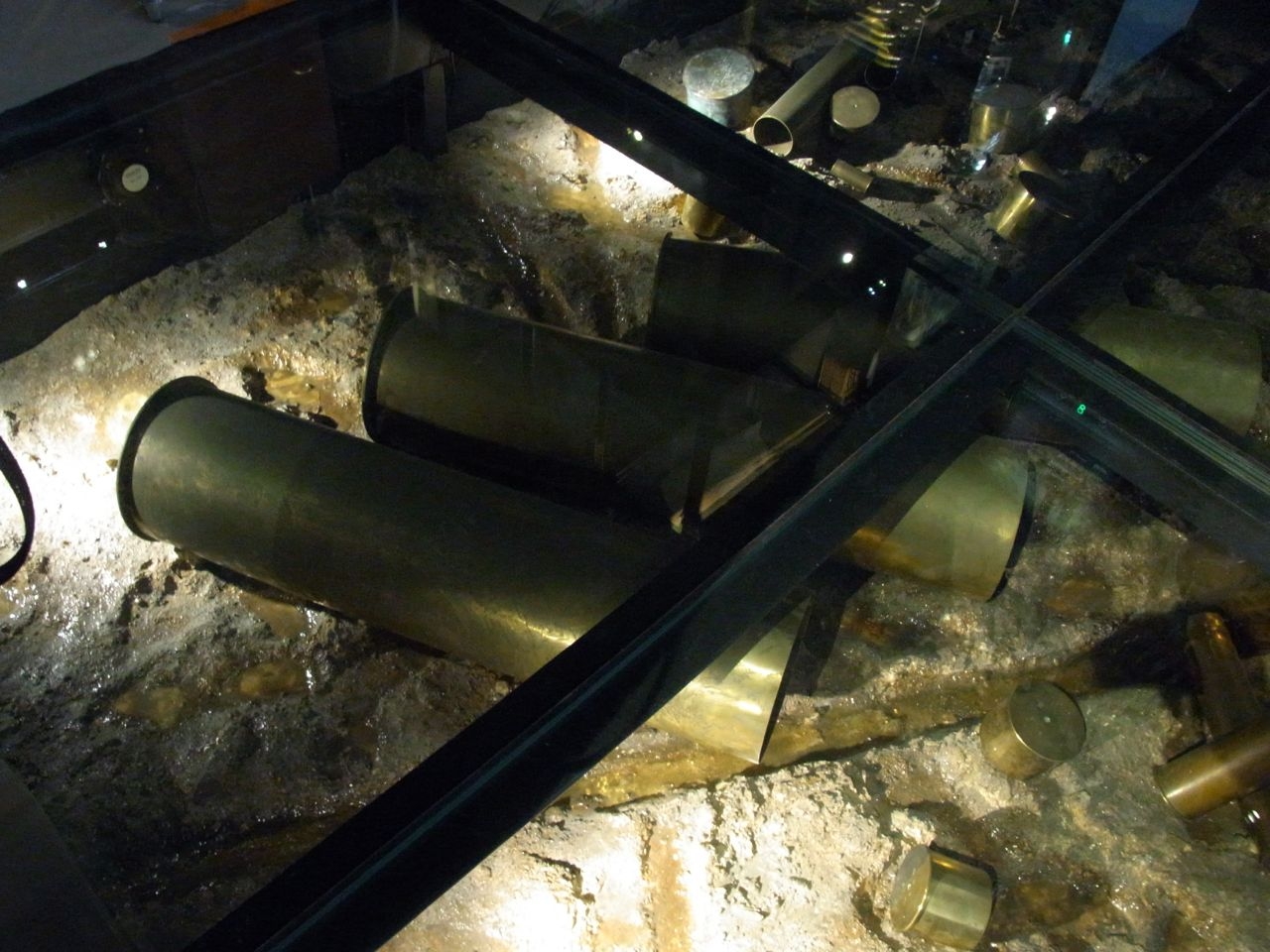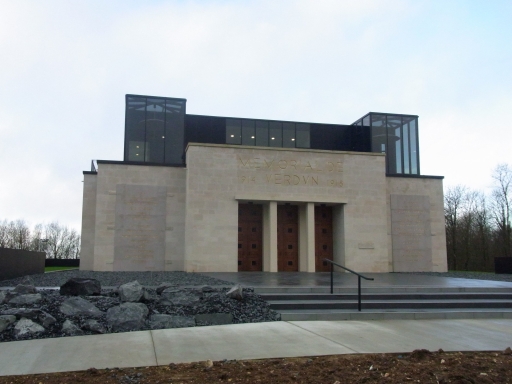Verdun’s Memorial Museum is reopening its doors, after a €12.5 million redevelopment programme to mark the 2016 centenary of the Battle of Verdun.
The first visitors will be welcomed today (February 21st) during a day of commemorations in Verdun remembering the devastating offensive launched by German troops in eastern France in 1916.
Almost 2,000 items are displayed in the museum’s expanded exhibition space, from soldiers’ personal effects to artillery pieces and an example of one of the countless trucks that ferried vital supplies night and day to the French armies on the ‘Voie Sacrée.’
The centrepiece is a dramatic evocation of the battlefield rising up on a giant video wall covering 100 square metres.

A shifting panorama of archival images recalls the desperate struggle fought on the heights above the River Meuse a century ago. German and French planes are suspended overhead, a reminder that Verdun also witnessed a crucial battle for control of the skies (Photo: Centenary News)
As it approached the Centenary, the museum’s challenge was to appeal to new generations while staying true to the spirit of its founders – the men who fought at Verdun.
Opened in 1967, the Mémorial de Verdun was originally inspired by French veterans who wanted a site on the former battlefields to commemorate their fallen comrades.
Director Thierry Hubscher explains: “After the last survivors died, at the turn of this century, it was felt that the Memorial Museum should be redesigned and renovated so that it could pass on memories and information about the Battle of Verdun to younger generations in a manner more in keeping with the times.”

Shell cases and the debris of war beneath glass walkways give a sense of stepping in soldiers’ footsteps across the battlefield (Photo: Centenary News)
For visitors from outside France, possibly less familiar with the Battle of Verdun, the interactive maps, photographs (many displayed for the first time) and eye witness accounts do much to explain what happened here in 1916. Clear translations are provided in both German and English.
A newly-added third floor looks over the battle-scarred countryside.
From the terrace, there’s a commanding view towards Fort Douaumont, captured by the Germans within days of launching their offensive, and the towering Douaumont Ossuary, commemorating 130,000 soldiers of both sides who have no known grave.
Franco-German reconciliation is a key theme for the museum.
“Every effort has been made to balance the French and German points of view,” notes Édith Desrousseaux de Medrano, curator of the permanent exhibition.
That will be further underlined on May 29th when the renovated Mémorial de Verdun is officially opened by President François Hollande and Chancellor Angela Merkel during France’s national commemorations for the battle.
 Douaumont Ossuary and Military Cemetery, seen from the terrace of the Verdun Memorial Museum (Photo: Centenary News)
Douaumont Ossuary and Military Cemetery, seen from the terrace of the Verdun Memorial Museum (Photo: Centenary News)
Perhaps the last word should go to the architect of the historic rapprochement between France and Germany after the Second World War, General Charles de Gaulle.
As a junior officer, de Gaulle was wounded and taken prisoner at Douaumont.
This quote from his speech marking the 50th anniversary of Verdun in 1966 sticks in the mind as you leave the exhibition.
“Based on the events that took place during the battle, neither French nor Gerrman troops can say that they gained anything but pain from all the fighting.”
Verdun Memorial Museum fully opens to the public on February 22nd 2016. For more information, visit the Mémorial de Verdun website.
Comemorative and cultural events remembering the Battle of Verdun will continue in France throughout 2016. Details can be found on the Verdun 2016 website.
CN Editor Peter Alhadeff took part in a press visit to the Verdun Memorial Museum for this report.
All images: Centenary News
Information supplied by Verdun Memorial Museum
